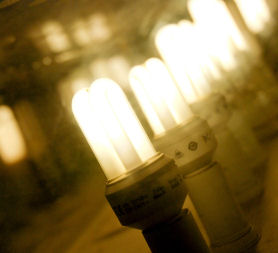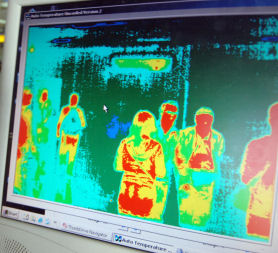Ten ideas to save the planet: efficiency deficiency
If every home in the UK was properly insulated carbon emissions would drop by 3.8 million tonnes. But can ageing British housing stock keep up with the green revolution?

What idea policy or technology holds the greatest promise for tackling climate change? That was the question Channel 4 News posed to the scientific community over the past few weeks. Thanks to the extensive contacts of the Science Media Centre at the Royal Institution Channel 4 News was able to email hundreds of scientists across various fields of expertise to sound-out their opinions.
There is a great need for energy efficiency in Britain as much of the housing stock is old and insufficiently insulated.
The UK Green Building Council estimates that buildings are responsible for 44 per cent of the country’s carbon dioxide emissions. Energy often seeps out of roofs and windows and is wasted in old equipment such as washing machines.
So should the green revolution be starting in the home?
Energy saving light bulbs, rain water storage and mini wind turbines are some of the current options for making homes greener. But a number of the scientists who contacted Channel 4 News suggested new technologies for reducing emissions and improving efficiency.
Climate change: 10 ideas to save the planet
Thermal imaging
Professor Joseph Giacomin from Brunel University said he was working on an idea to get consumers, and ultimately emitters, interested in climate change so that they would incorporate it into their everyday lives.
“The main idea is to make energy directly perceivable, thus directly understandable, by people,” he said.
Prof Giacomin is designing concepts which incorporate thermal imaging into home thermostats or car dashboards. View other research ideas, such as the “glowing guilt power cord”, from the Human Centred Design Institute here.
“In a nutshell, the concept is to provide a thermal sixth sense which emotionally engages people,” he said.
“In a nutshell, the concept is to provide a thermal sixth sense which emotionally engages people.” Prof Joseph Giacomin
Professor Robert Critoph from the University of Warwick wrote to us about his own efficiency ideas.
“I and my team [at Warwick University] have been developing gas fired heat pumps,” he said.
Professor Robert Critoph from the University of Warwick wrote to us about his own efficiency ideas.
“I and my team [at Warwick University] have been developing gas-fired heat pumps,” he said.

“The product is a box (1.5m high, 0.5m square base) that sits outside your house and replaces your gas boiler. It also burns gas, but one third less than the best condensing boilers on the market.
“It does this by extracting heat from the air outside, with the net effect that the quantity of heat going into the building is 130 per cent or more than the energy in the gas burnt. Not magic – just good technology.
“The machine is a gas-fired heat pump, similar in some ways to electric heat pumps that have been around for many years, but with even lower emissions and (we hope!) more affordable.
“Electric heat pumps are also an essential part of the mix needed to reduce the energy consumption needed to heat buildings, as is good old-fashioned insulation.
“The important thing about all of these is that it only takes a bit of political will to introduce them on a large scale and that they can make an immediate contribution.”
Efficiency impossible?
The UK Green Building Council has predicted that the UK could half the carbon emissions from homes and buildings in the next decade.
As well as the technologies mentioned above the Energy Saving Trust suggests investing in efficient products, using energy saving light bulbs and making sure homes are properly insulated. In fact the government have already introduced insulation grants for certain eligible people.

But energy efficiency faces obstacles. As discussed on the “climate of apathy” page incentives may be necessary to encourage consumers to go green.
Professor Marco Starink from the University of Southampton told Channel 4 News that although low tech solutions such as thermal insulation and efficiency were important, “solutions will be found by addressing all sources of emissions.”
“Some of these solutions are high tech and highly innovative, but it is unlikely that these on their own will turn things around,” he said.
-
Latest news
-
As India goes to the polls in the world’s largest election – what do British-Indians think?6m

-
Tees Valley: Meet the candidates in one of the biggest contests coming up in May’s local elections4m

-
Keir Starmer says public sector reform will be a struggle7m

-
Nicola Sturgeon’s husband Peter Murrell charged with embezzlement of funds from SNP1m

-
Ukraine might finally get $60billion in American weapons and assistance to defend against Russia3m

-




